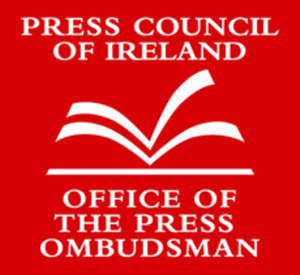Explaining how his wife managed to cook white bread with all the restrictions imposed by rationing, the farmer told Seamus O’ Brien that she had “hit” upon a cooking method that many other women around the country were quietly adopting in the kitchen: They packed quantities of the flour into silk stockings and sieved all the unwanted bran out of it, so the flour could once again be used to produce the finest of traditional Irish white bread.
Alongside the loaf that Seamus thought might have dropped like manna from Heaven was a large dish of homemade farmer’s butter, with its distinctive “non-commercial” aroma. The farmer had cows galore and was able to separate cream from the milk to produce butter, which, the young carpenter imagined, had a more tantalising flavour than the kind one bought in shops or tasted in restaurants.
Tea and bread weren’t the only foods affected by shortages and rationing. Some fruits disappeared completely from shop shelves and you couldn’t get them for love or money: Bananas, oranges, and lemons became just fond memories to people who had long taken them for granted.
Some children grew up to be seven or eight years old before they saw any of these fruits. Coffee and chocolate became scarce, as did household items such as pots and pans for cooking. And you needed ration coupons to buy clothes two and a half years into the war.
Seamus remembered seeing his first ration books in 1942. They had coupons of all colours with numbers. He thought they had a frighteningly cold and intimidating look of authority about them. Any violation of the rationing code was deemed both unpatriotic and unlawful.
You can’t hold a candle to Sean Holden
From February 1942, gas was severely rationed, being available for only a few hours a day. Since the limited coal supplies were needed for industry, many households had to do without it altogether. This affected the towns and cities more than rural areas, where people were well used to burning turf, and also accustomed to living without electricity.
But country-dwellers didn’t escape Emergency restrictions either. While they had their turf fires to keep them warm, augmented by bits of firewood they collected in the countryside, they used oil lamps to illuminate their homes and farm outhouses…and `paraffin oil was scarce too, which made it necessary for country folk to seek alternative sources of light.
Candles seemed an obvious and viable substitute, but here too there was a snag: The supply of candles had also dwindled owing to wartime restrictions. So what could be done?
In the Callan district, local cunning and initiative again saved the day, and helped to brighten up the blacked-out homes. Country folk made their own candles from suet or animal fat.
Seamus marvelled at the process. “I saw it at a house in Modeshill in late 1943,” he recalled “The farmer dropped big dollops of fat into a huge saucepan and it boiled on the hob for ages. The fat had been removed lovingly with a carving knife from the best of Callan Hairy Bacon. Normally you’d not leave a trace of it on your plate, but it was ideal for candle making.
“When it had been well and truly melted, he poured the red hot liquid into the hollow steel barrels of old bicycle pumps into which he had inserted long strings of hemp, which he had knotted at the ends of the barrels.
“He then let the fat cool in these long narrow containers. When each portion was solid, he extracted it. Then he cut up the pieces into perfect homemade candles. The bit of string left protruding from each candle served as a wick.”
Seamus experienced a memorable mishap one day later in the Emergency when he and Sean Holden were helping a farmer to make candles. The farmer had turned out three-dozen bicycle pump length candles and informed the lads that they just needed to allow these to cool off for a while.
The farmer had to travel into Callan for a trailer-load of pig mash and left the two volunteers to complete the operation, promising them a candle each for their trouble. He planned to cut the lengths into standard size candles upon his return.
Sean, who was by then a much-admired intelligence officer in the LDF, (one of the youngest to hold this position in Ireland ) suggested that the solidified lengths of fat be left in a water barrel in the farmyard, and Seamus agreed that this was a nifty idea.
Unknown to the zealous candle-making assistants, however, the farmer had three sheepdogs and a terrier loose in the farmyard. They also failed to take into account the fact that, since the candles were made of animal fat, the dogs might take a shine to them.
They were inside the house with their feet up on the table, drinking lemonade the kindly housewife had given them, when they heard an unmerciful racket in the farmyard.
They ran outside to be confronted with the sight of the four dogs savaging the lengths of candle. They were too late to save the candles. The dogs seemed to have devoured the lot, including the string that was to serve as wicks. This had got entwined in their intestines and the vet had to be called in next day to remove it.
But Sean noticed one of the dogs still munching a piece of candle. Availing of his LDF special physical training, he bounded towards the beast, and a wrestling contest ensued between him and the sheepdog.
(Extract from Are We Invaded Yet? by John Fitzgerald. Pictures show: Parliament Street: early 1930s and Callan Alive group containing, on far right, the legendary Sean Holden in his latter years. Others in picture are, from left to right: James Quigley, Kevin Dawson, Kevin Keogh, Margaret Lennon, Damien Ryan, Eddie Walsh, Ann Cunningham )
To be continued…
